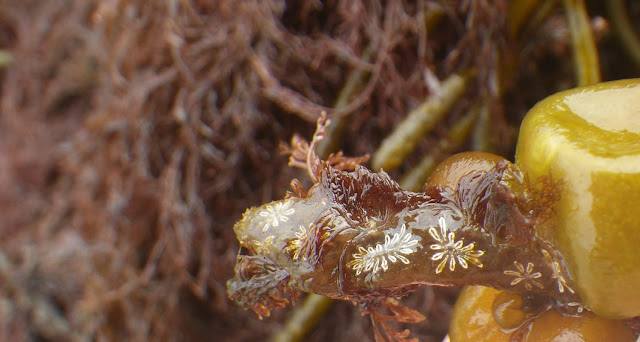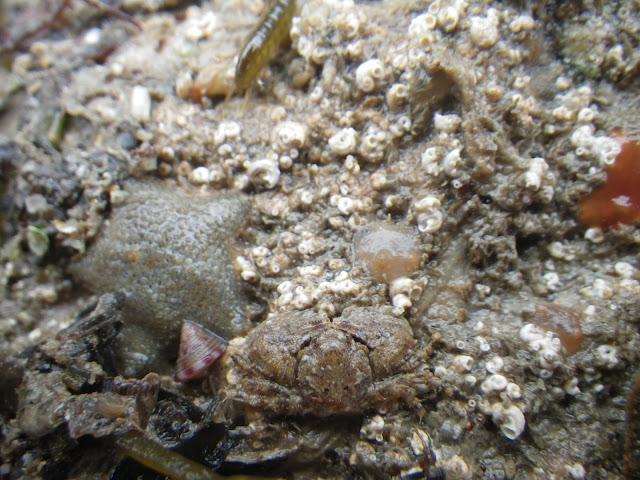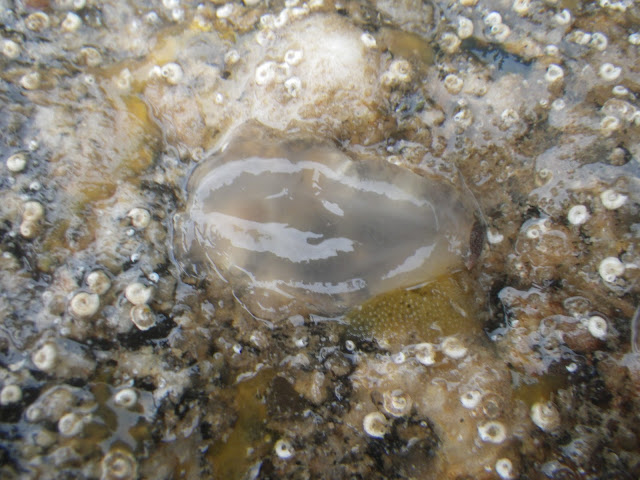The rocky shore at Mallaig predominantly comprises bedrock with gullies and pools. Yellow and grey lichens occur at the top of the shore, below which the black lichen Verrucaria maura and channel wrack occur. The mid shore is dominated by barnacles and a variety of fauna and fucoid seaweeds occur within pools and on the lower shore. Habitat classification: LR.MLR.BF (Barnacles and fucoids on moderately exposed shores).
Below are images of this habitat and organisms you may see whilst rock pooling in it:
 |
| A prawn (Palaemon spp). Biotope classificaion: LR.FLR.Rkp.Cor (Coralline crust dominated shallow eulittoral rockpools) |
 |
| Anemone in a coralline rock pool. Biotope description: LR.FLR.Rkp.Cor (Coralline crust dominated shallow eulittoral rockpools). |
 |
| Rough periwinkle (Littorina saxatilis) in a coralline rock pool. Biotope description: LR.FLR.Rkp.Cor (Coralline crust dominated shallow eulittoral rockpools). |
 |
| Anemones in a coralline rock pool. Biotope description: LR.FLR.Rkp.Cor (Coralline crust dominated shallow eulittoral rockpools). |
 |
| Blue mussels (Mytilus edulis) and rough periwinkle (Littorina saxatilis) in a coralline rock pool. Biotope description: LR.FLR.Rkp.Cor (Coralline crust dominated shallow eulittoral rockpools). |
 |
| Pools lower down the shore contain more seaweed species. Biotope description: LR.FLR.Rkp.Cor (Coralline crust dominated shallow eulittoral rockpools). |
 |
| Green velvet horns (Codium spp) in a coralline rock pool. Biotope description: LR.FLR.Rkp.Cor (Coralline crust dominated shallow eulittoral rockpools). |
 |
| Barnacles dominate the mid shore below which occurs a band of fucoid seaweeds. Habitat classification: LR.MLR.BF (Barnacles and fucoids on moderately exposed shores). |
 |
| Barnacles and their predator the dog whelk (Nucella lapillus) on the mid shore. Habitat classification: LR.MLR.BF (Barnacles and fucoids on moderately exposed shores). |
 |
| Spiral wrack (Fucus spiralis) in the mid shore. Habitat classification: LR.MLR.BF (Barnacles and fucoids on moderately exposed shores). |











































